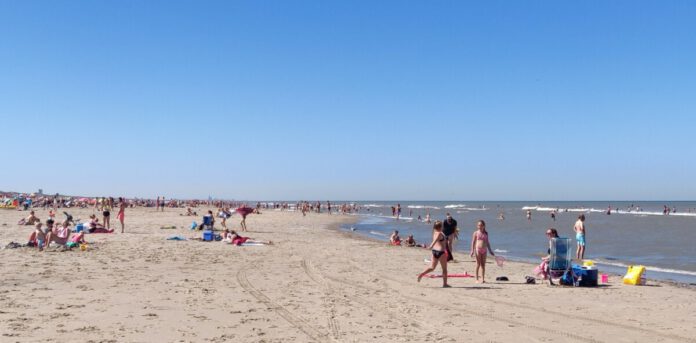Are you thinking of going to the beach to soak up some of that “vitamin sea”? Before grabbing your swimwear and sunhat, check the level of poo bacteria at your local beach — yup. 🙃
An excessive amount of faecal bacteria has been measured at more than 50 beaches, lakes, and rivers over the past year, according to RTL Niuews.
Swimming in sewage water
Katwijk in South Holland attracts many sun-bathers, surfers, and vacationers during the summer due to its (normally) lovely beaches. However, measurements from the Rijkswaterstaat (Directorate-General for Public Works and Water Management) show that it’s one of the beaches where excess levels of poo bacteria are regularly found.
The persistently high levels of bacteria occur because sewage waste is sometimes disposed of in the sea (sorry, what?). A beach-comber at Katwijk reports that cotton swabs, tampons, and toothbrushes, are all common occurrences at the beach.
The sewage water washes into the sea exactly where swimmers and surfers enjoy the waves. 🤢
Surfing: sick — but not in a good way
Excess poo bacteria is not only a problem for cleanliness. It’s also a health concern.
The faecal bacteria E.coli and Enterococcen can cause you to vomit or have diarrhoea which can be particularly dangerous for children and the elderly.
Several surfers have fallen ill after a surfing session at Katwijk. One surfer shared this experience online: “Just had an evening surfing session in Katwijk. The sea was littered with garbage.” He goes on to say that “after a surf session, rushing hard to get home on time…yep, diarrhoea again. What is it with that surf spot in Katwijk? Definitely not recommended!”
Because of difficulties with measuring the levels of poo bacteria in the water on a regular basis, the Rijkswaterstaat urge sick surfers report their experiences. 🤙
Challenges with measurements
At the moment, the Rijkswaterstaat measures the levels of E.coli and Enterococcen twice a month. Microbiologist and bathing water expert Anniek de Jong from the research institute Deltares in Delft says that the bacteria levels should be measured much more often.
Because the results of the tests take two-three days to come in, the water quality can change by the time swimming advice can be given.
However, Deltares is currently developing a new system to measure the levels of faeces in the water. This system will allow people to check the levels the same day that they want to go swimming.
However, until the new system is operating, swimmers are often unaware of the bacteria in the water.
Reluctance to close beaches
According to the province of South Holland, it’s not necessary to close a beach due to high levels of E.coli and Enterococcen.
The province consulted the GGD (municipal health services) about the need for a swimming ban on the beach in Katwijk but was advised not to impose one.
The beach in Katwijk is monitored by the Rijkswaterstaat and if sewage water is detected then swimmers are advised to avoid the water for 24 hours.
Summer is saved! Overall, Dutch beaches are safe to swim at
Currently, there is almost no warning about the sometimes dangerous levels of faecal bacteria. However, Marleen van Rijswick (Professor of European and National Water Law at Utrecht University), sees a swimming ban in serious situations as a necessary evil.
Overall, the beaches in the Netherlands are safe to swim in. Therefore, she emphasises that a swimming ban is only for “structural causes that cannot be solved”.
One issue that the professor predicts if beaches were to close due to a swimming ban is that people might not adhere to it. She states that “it is also typically Dutch to go swimming where it is not allowed.” 😂
How’s the water at your beach?
The places with the most frequent findings of poo bacteria are at the Noord-Holland beach Oud Valkeveen; the Groningse Zeestrand Termunten; the Oude Pol in Gelderland; and the Zuid-Holland beach Katwijk aan Zee Boulevard Noord.
RTL Nieuws provides an interactive map where you can see the measurements for your area over the past two years.
Do you have any experiences with this at Katwijk or any of the other beaches? Tell us in the comments below!
Feature Image: Abuzer van Leeuwen/Supplied
